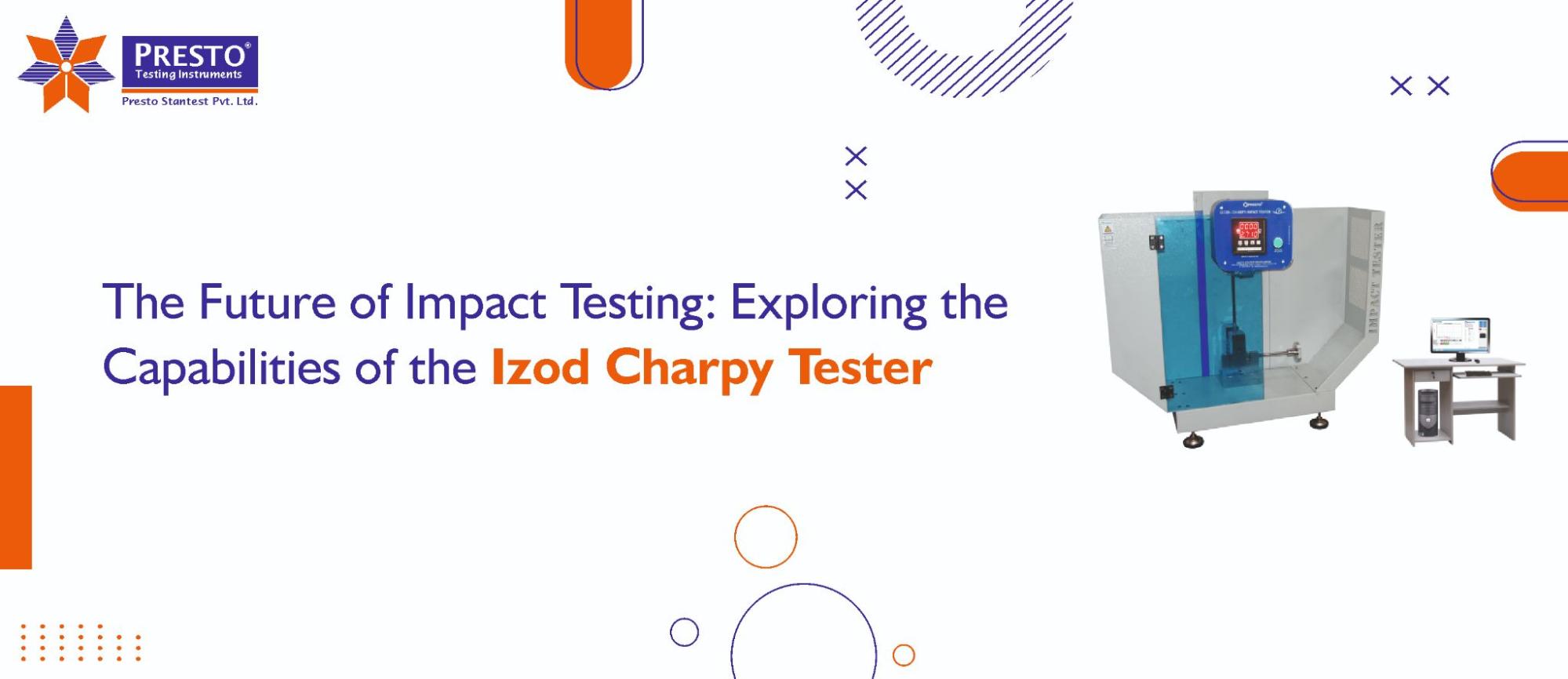One of the most significant methods in the evaluation of the toughness of materials under dynamic conditions is impact testing. Standardized tests are widely applied by engineers, researchers, and quality assurance personnel in the determination of a material's resistance to sudden forces. Of all these tests, the Izod and Charpy impact tests are considered best.
This blog delves deeper into the technical nitty-gritties of the Izod and Charpy Impact Tester detailing innovative features, industry relevance, and future potential. To those who are already familiar with the basics, here's an advanced discussion prepared to help in identifying key differences and leading-edge capabilities.
Technical Overview of the Izod Charpy Impact Testing Machine
The Izod Charpy Impact Testing Machine combines mechanical precision with digital innovation to provide a necessary tool for modern material testing laboratories. Designed for use in both Izod and Charpy test protocols, this machine integrates advanced mechanics and electronics to provide accuracy and repeatability without comparison.
1. Main components and mechanisms
- Pendulum Design: The heart of the system consists of a precision-engineered pendulum, calibrated to reach specific impact energies. A frictionless bearing system on which the pendulum rotates minimizes energy loss in the test.
- Anvil and Specimen Holder: The machine has interchangeable anvils for Izod and Charpy configurations to ensure that the transition between tests can be made seamlessly.
- Digital Encoder and Load Cells: The angular displacement of the pendulum is measured by a high-resolution digital encoder. The instantaneous force feedback is also provided by strain-gauge load cells.
2. Testing Parameters
Izod and Charpy tests are mainly distinguished based on specimen orientation and position of notch:
- Izod Test: The test piece is mounted vertically. It holds the notch with the face forward. This test estimates the notch sensitivity and the material toughness.
- Charpy Test: The test sample is placed horizontally on supports in such a way that the notch lies opposite to the impact. It measures the energy-absorbing capacity.
Innovations Shaping the Future of Impact Testing
The impact testing industry is transforming in a big way, and the Izod Charpy Impact Tester market is leading the way. Key developments include:
1. Digital Integration
Modern testers have touch-screen interfaces, cloud connectivity, and advanced software for data logging and analysis. Real-time results visualization and remote access capabilities ensure operational efficiency.
2. High-Energy Impact Testing
Designed for extreme applications, high-capacity models can operate at energy levels greater than 750 Joules. This makes them ideal for testing high-strength alloys, composites, and other advanced materials.
3. Environmental Chambers
To mimic real-world conditions, testers are now equipped with environmental chambers, enabling tests at sub-zero or elevated temperatures. This ensures comprehensive material characterization.
4. Automation and AI Integration
Automated specimen feeders and AI-based analysis algorithms make testing workflows smoother, increasing throughput and accuracy. Predictive maintenance alerts and calibration reminders enhance reliability.
Benefits of Using the Izod Charpy Impact Tester
The Izod Charpy Impact Tester provides a wide range of benefits for technical and operational purposes:
Precision and Repeatability: Advanced calibration mechanisms ensure consistent results, even under demanding conditions.
Versatility: Support for both Izod and Charpy tests expands application possibilities.
Comparison of Charpy vs Izod Impact Tests
While Charpy and Izod tests are quite similar, understanding their differences is crucial to choosing the correct test method:
|
Feature |
Charpy Test |
Izod Test |
|
Specimen Orientation |
Horizontal |
Vertical |
|
Notch Position |
Faces away from the pendulum |
Faces the pendulum |
|
Impact Point |
The midpoint of the specimen |
Near the clamped end |
|
Applications |
Structural materials (e.g., beams) |
Machine components (e.g., gears) |
|
Energy Range |
Typically higher energy absorption values |
Moderate energy absorption values |
FAQs of the Izod Charpy Impact Tester
1. Can the Izod Charpy Impact Tester do a high-energy impact test?
Yes, the latest models can conduct tests over 750 Joules that are to be done for high-strength alloys and composites.
2. What are the general testing protocols for the Izod Charpy test?
The standard protocols include ASTM E23 for metallic materials and ISO 148-1 for Charpy tests. These standards define the specimen size, test conditions, and reporting requirements.
3. Are there digital versions of the Izod Charpy Impact Tester?
Yes. Modern testers have digital interfaces, automated data acquisition systems, and software integration to enhance performance and user-friendliness.
The Izod Charpy Impact Tester or Izod Impact Tester is the epitome of impact testing technology, combining precision engineering with digital innovation. As the Izod and Charpy Impact Tester market continues to evolve, these machines are poised to redefine material testing standards across industries. Their capabilities will meet the challenges of modern engineering and quality assurance, from high-energy applications to automated workflows.
Through technical detail and making use of the most recent progressions, one can confidently make informed decisions to know whether his material will behave resiliently or reliably under real-world conditions. Impact testing, in a word, has reached the future, with its future looking as active and strong as the material it tests.
Looking for the best Izod Charpy Impact Tester price? Contact us today for competitive pricing and top-quality testing solutions. Call +91-9210 903 903 or email info@prestogroup.com for more information!
